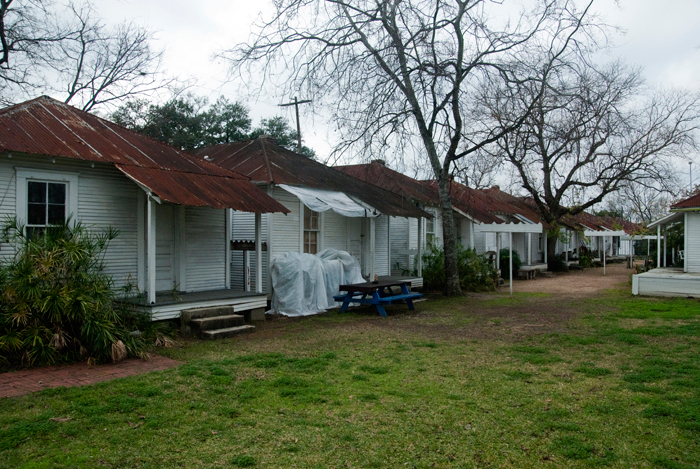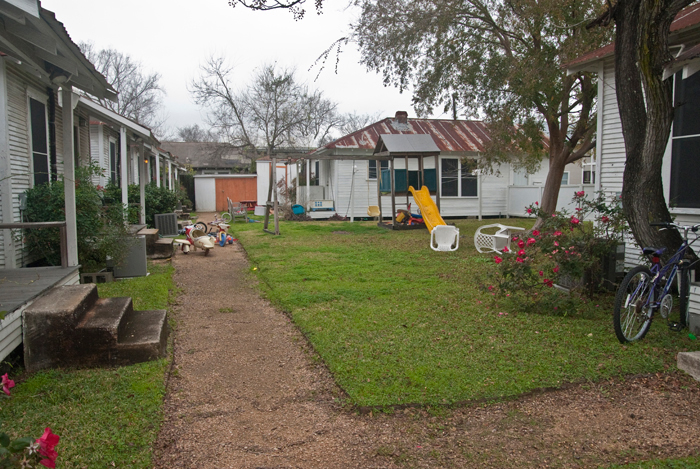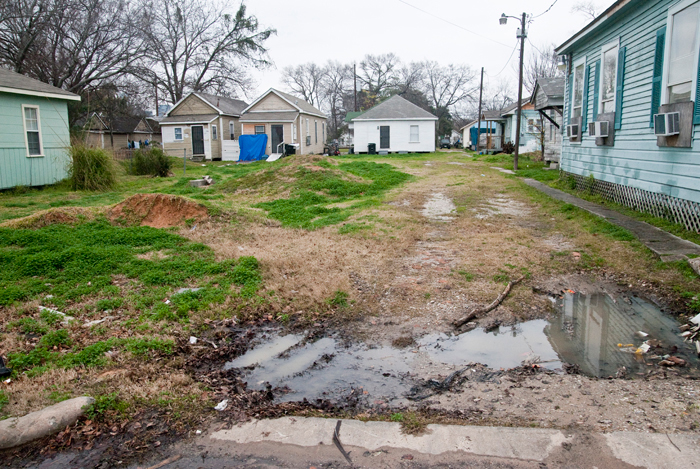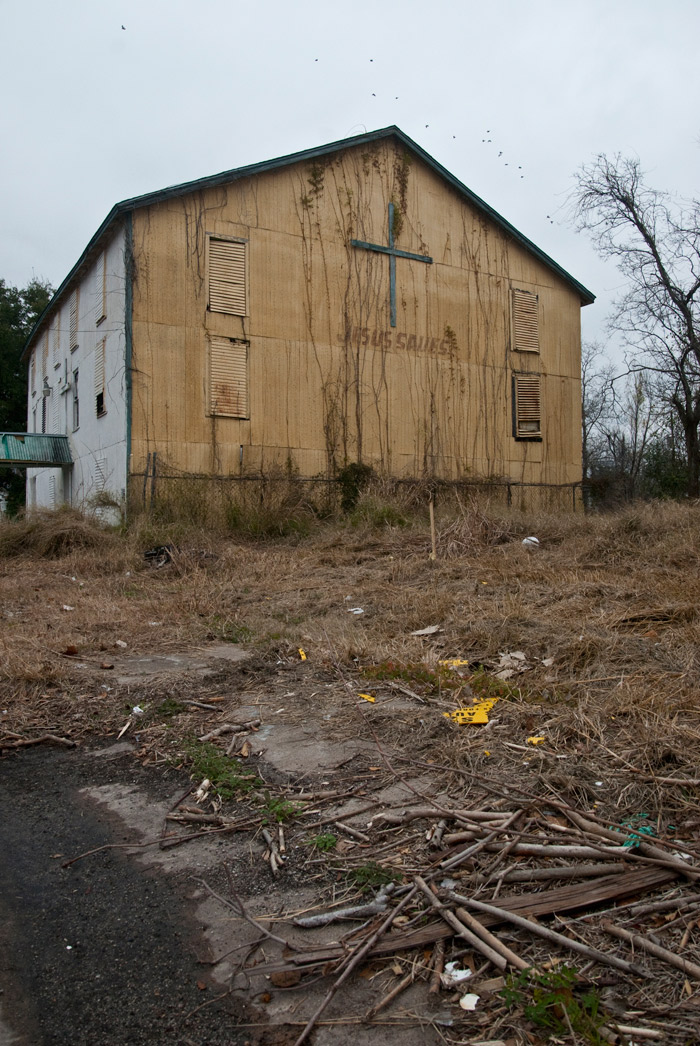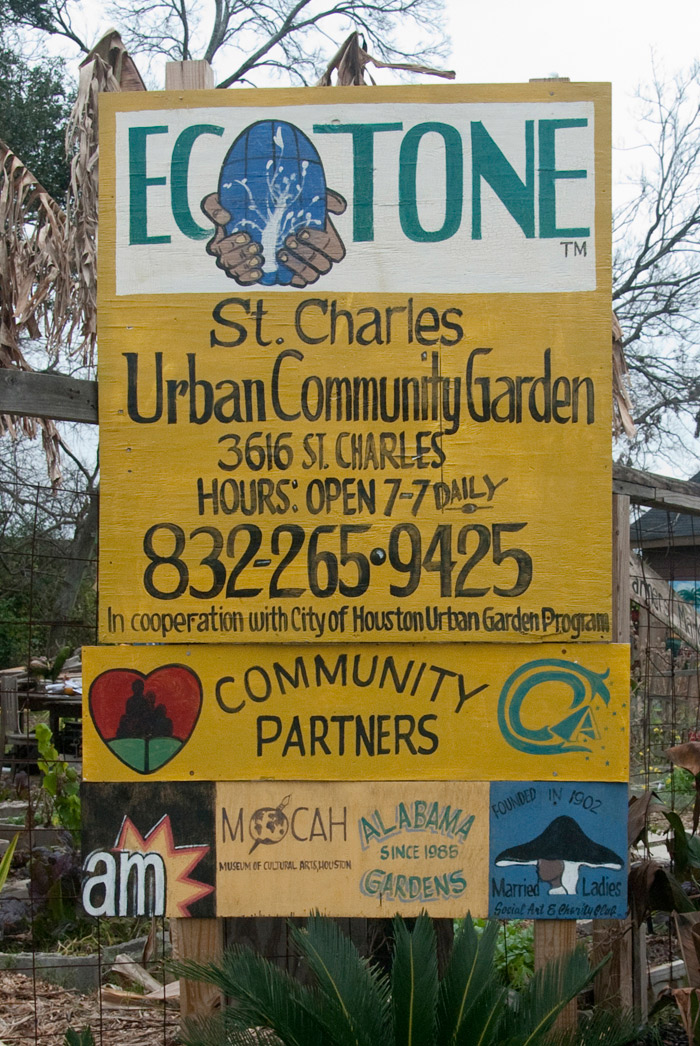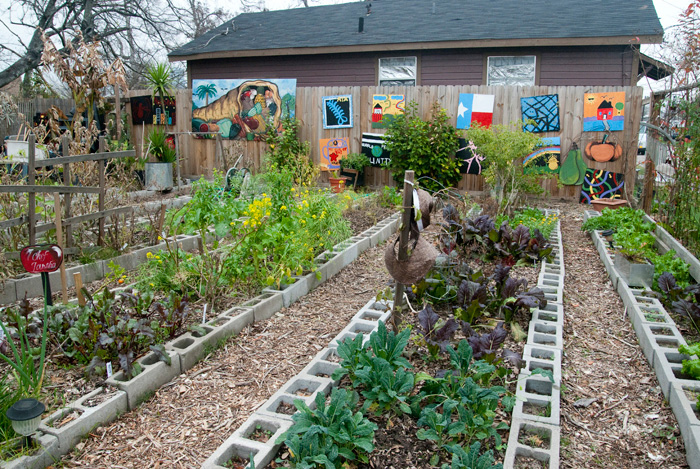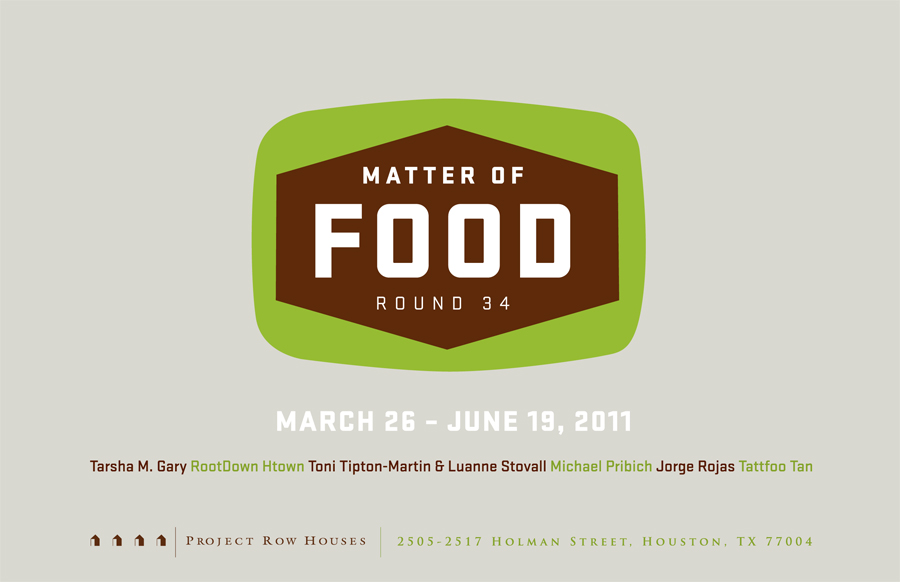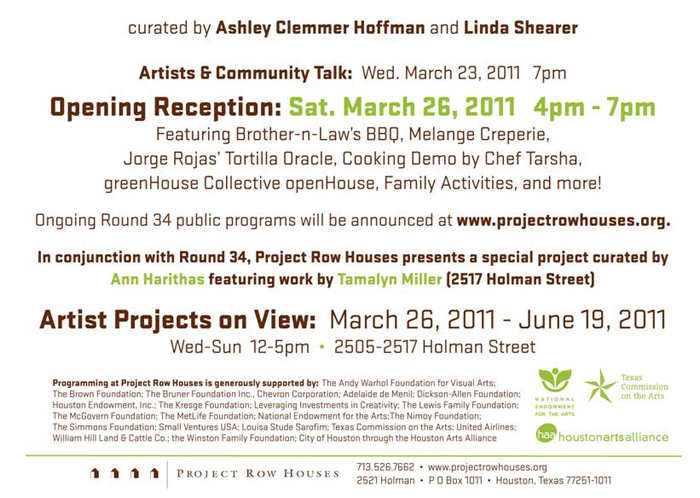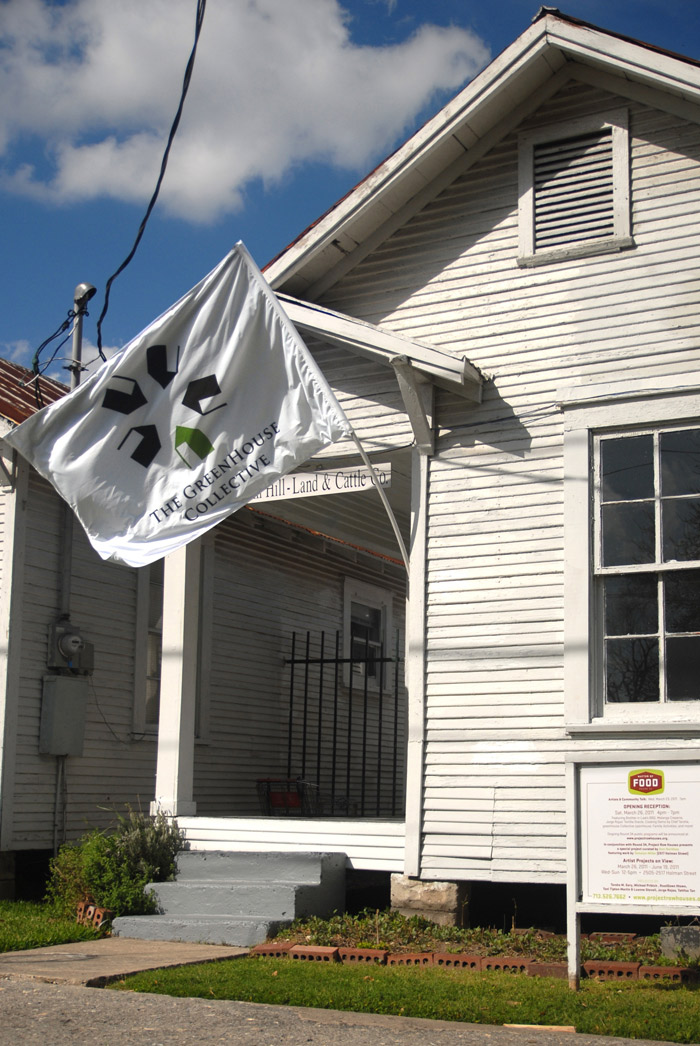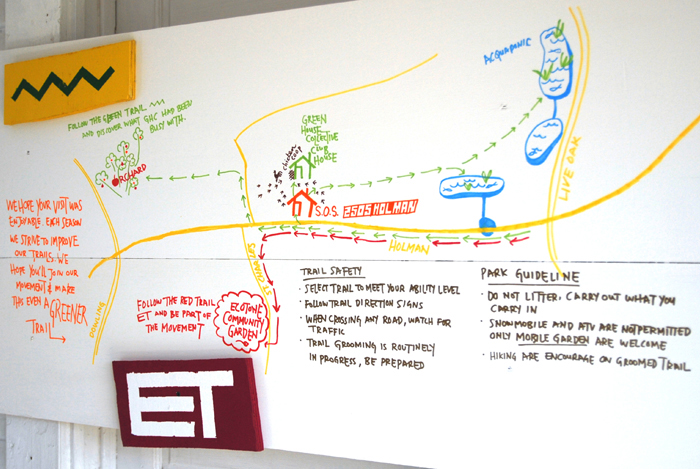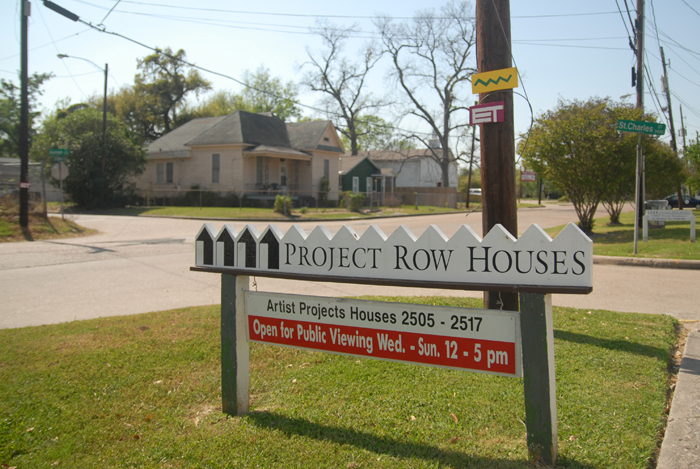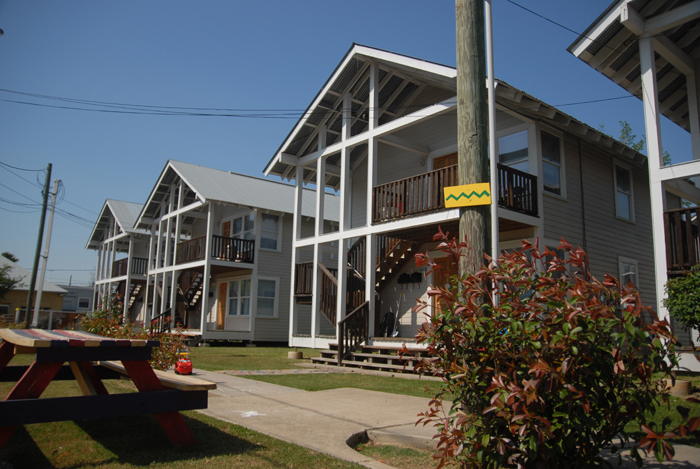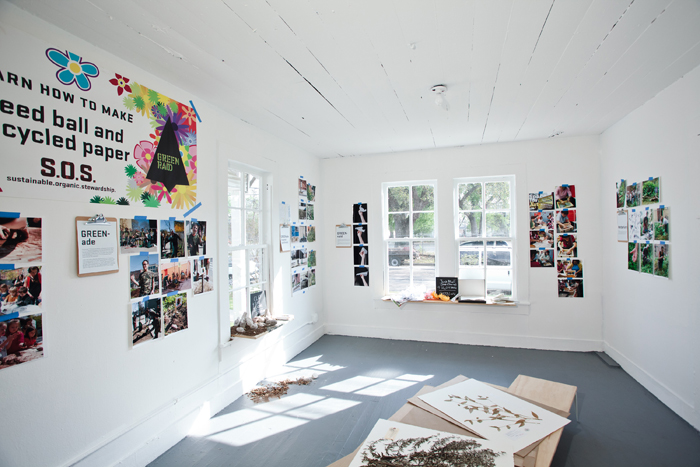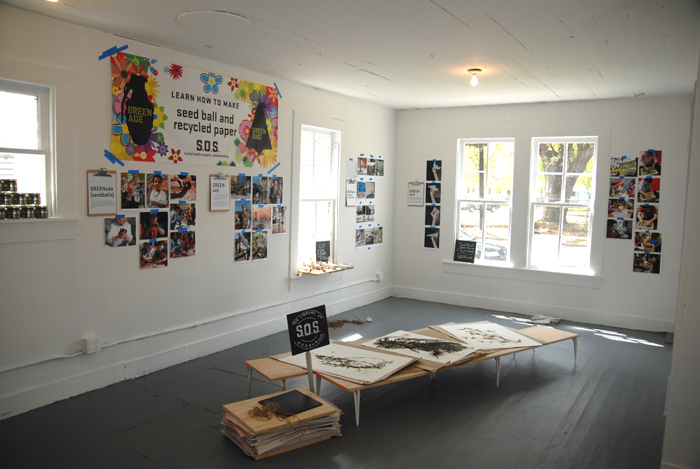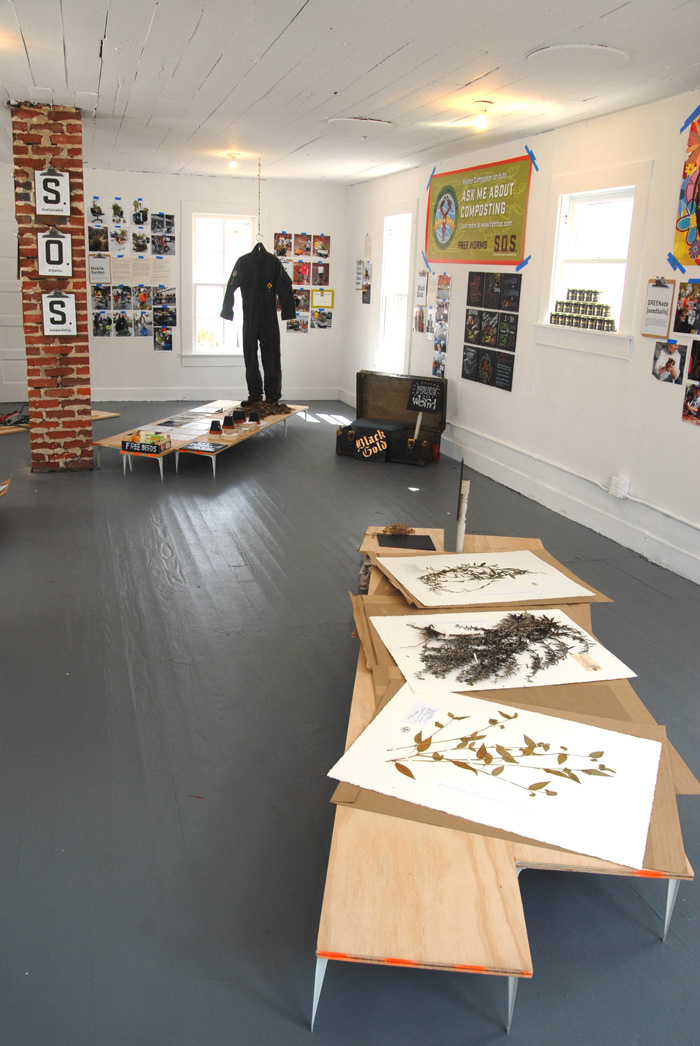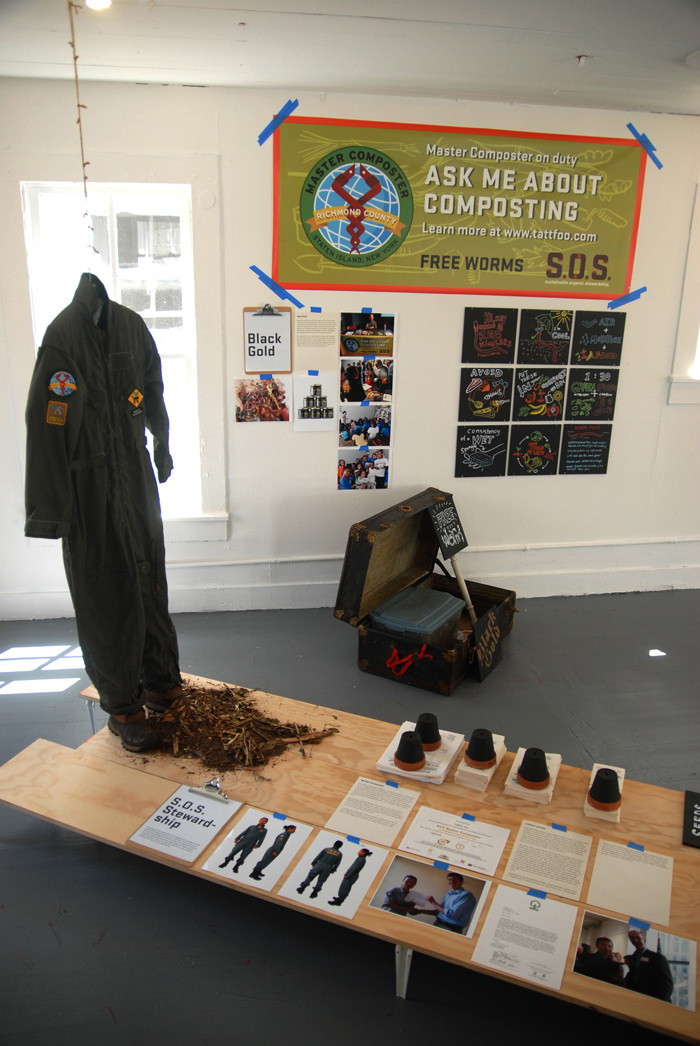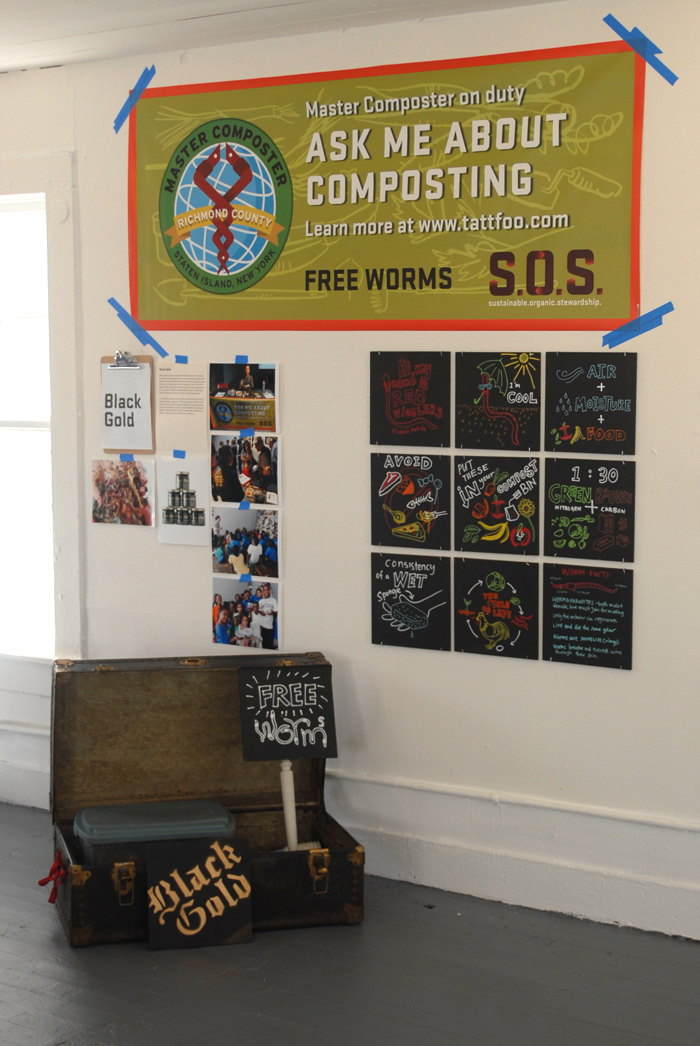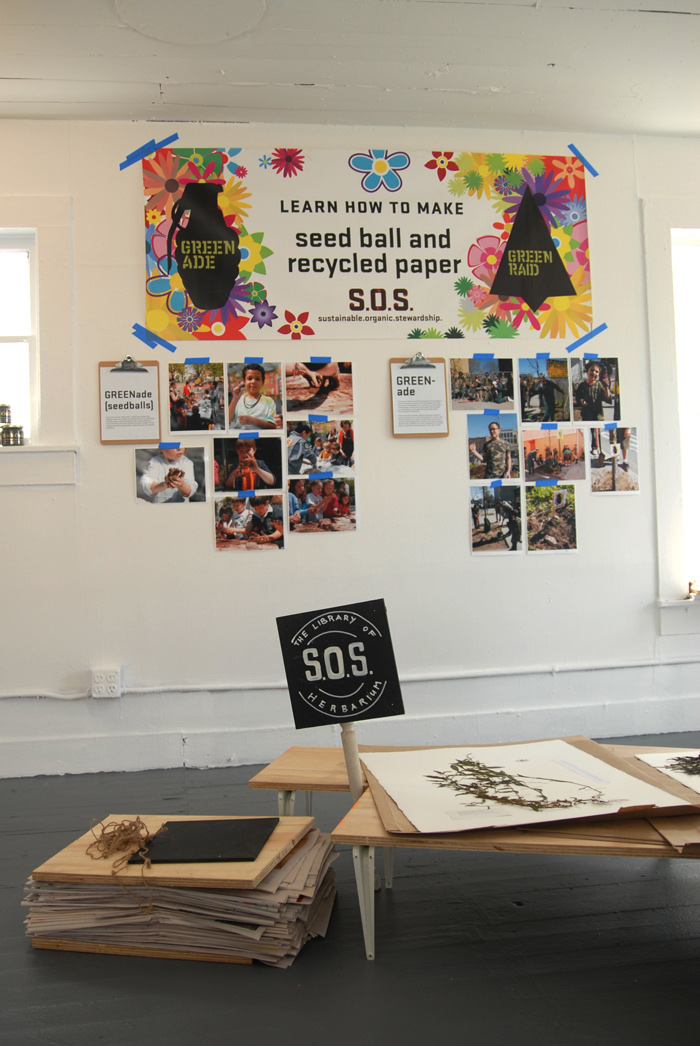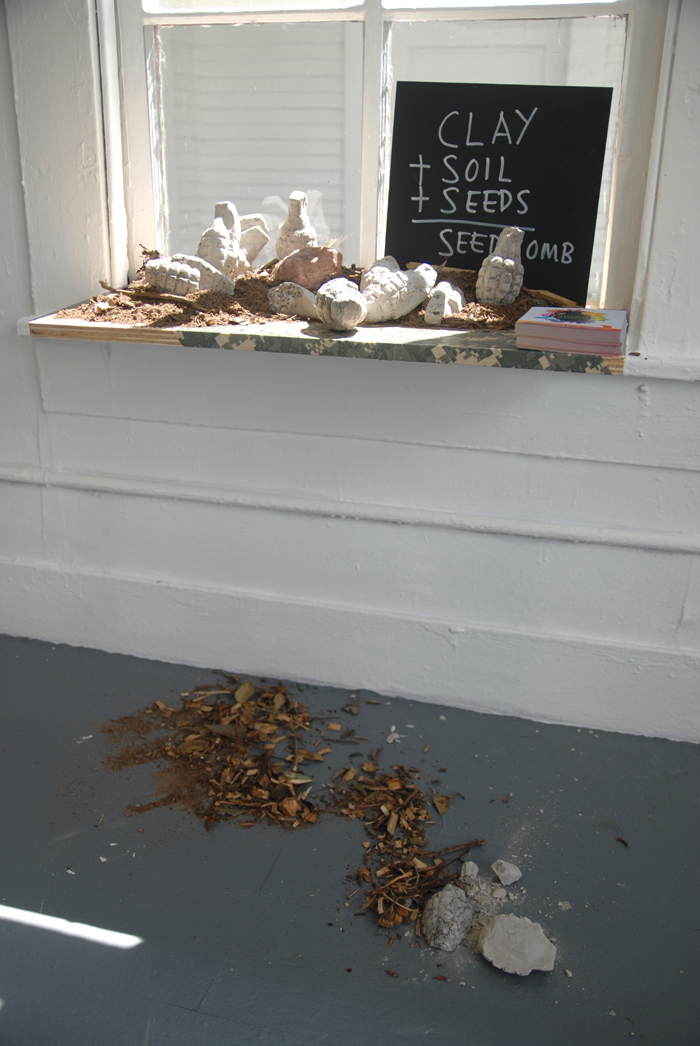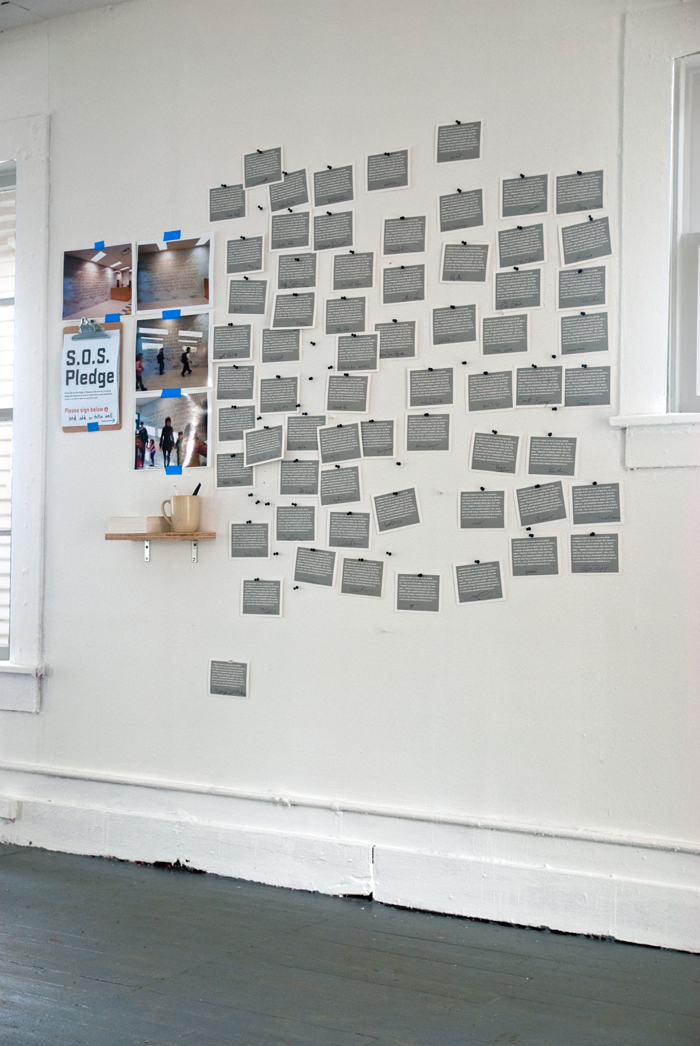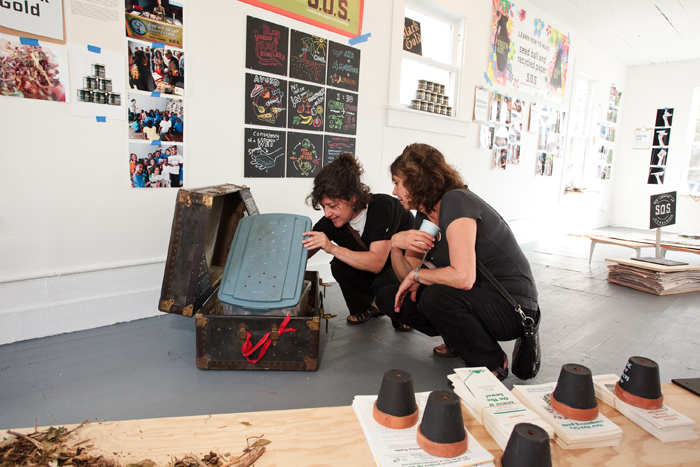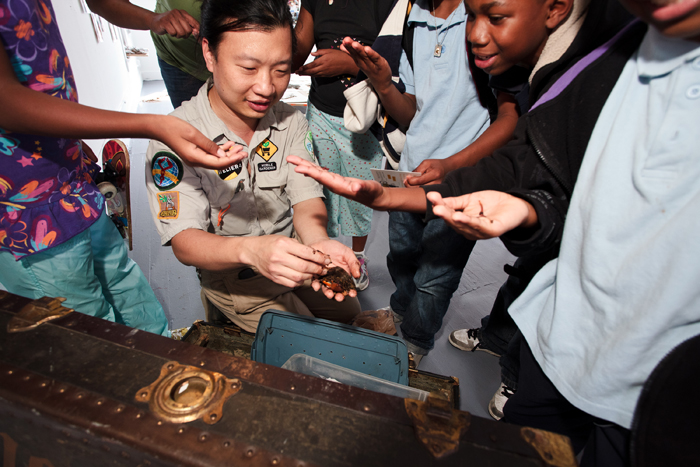Project Row Houses (PRH) is a neighborhood-based nonprofit art and cultural organization in Houston’s Northern Third Ward, one of the city’s oldest African-American communities. PRH began in 1993 as a result of discussions among African-American artists who wanted to establish a positive, creative presence in their own community. Artist and community activist Rick Lowe spearheaded the pursuit of this vision when he discovered the abandoned 1 1/2 block site of twenty-two shotgun-style houses in Houston’s Third Ward. The shotgun houses became the perfect opportunity to pursue the creation of a new form of art. They had two key elements: 1) a beautiful form recognized by the renowned Houston artist Dr. John Biggers to be filled with architectural, spiritual, and social significance, and 2) a need for social action among the community to bring the project to life. A documentary film about PRH The New York Times The Huffington Post
Project Row Houses complex between Holman and Francis Street in Houston 3rd Ward
Empty lots and abandon buildings in the neighborhood
Ecotone Community Garden on St. Charles only a few steps a away from Project Row Houses.
A thriving community garden started by Chef Tarsha Gary on St. Charles in the heart of Third Ward filles with artworks on the wall and vegetables and fruit trees.
(Round 34) March 26 - June 19, 2011 Project Row Houses
Over the years, Project Row Houses has shaped itself in response to the needs identified within the Northern Third Ward community. When Michelle Obama began addressing her concern around “Food Deserts, areas with little to no access to healthy fruits and vegetables,” PRH was able to relate. With over forty households now living on our ten-block site, some of them without regular transportation, the lack of accessible, healthy and affordable food is a growing concern. A year ago a group of residents and artists responded to this need by forming the GreenHouse Collective, and exploring the practice of aquaponic and raised bed gardening on PRH’s site. Simultaneously, another community-based garden, ECOTONE, situated one block away, has emerged and is thriving. Healthy cafes and food trucks are slowly getting established, farmers markets and co-ops are becoming more available and the idea of a community grocery store at PRH is being discussed. Round 34: Matter of FOOD emerged as an opportunity to not only address issues of nutrition, accessibility and sustainable urban farming practices but to also celebrate how food traditions enrich lives, create connections and preserve history both in our Third Ward community and beyond. In researching the many creative practitioners who are exploring food-related topics, the role of food in our belief systems surfaced along with social justice issues around food production. Round 34 explores some of the very intricate ways in which food affects, sustains, and improves our lives. Our hope is that it can serve as an educational vehicle, creating awareness, bringing people together and providing opportunities for dialogue.
S.O.S. + The Greenhouse Collective Context: My introduction to The Greenhouse Collective on the day of my arrival at PRH is the planting of the orchard on the empty plot on Dowling Street on January 16, 2011. Braving the torrential downpour the volunteers planted the trees, which include: Sugarcane Jujube, Banana Fig, Red Silk Pomegranate, Peach, Osborne Prolific Fig and an Olive tree. Learning that the earlier founding artists had moved on to work on their individual projects and left only with two members without a lead gardener and over loaded responsibility. To make a structurally strong community garden, the suggested number of person which is unrelated to each other is five. Another challenges is that the historical art complex is divided by a street and is gated and locked. This proof to be a challenge to interact with the residents from the rental housing. Objective: Engage: Later, a private discussion is held in my quarters between two key person, Chef Tarsha and Rebecca Novak of GHC which had no opportunity to formally meet each other had some time to sit down for the first time to talk, discuss exchange contact information and plan a concrete future for the sustainability of both project respectedly. Presentation: By having the front and back door of the exhibition shot gun houses open, visitors can both see the S.O.S. exhibitions and got inspired and what to get involve locally and GHC headquarters is right in front of them across the door. Mobile Garden project can be activated with the children and be placed in front of the row house to create further visual interest. There is also a need to calls for a green corridor that mark the green spaces that being reclaimed by Ecotone and GHC, this can be a green flag that line the street or the appropriation of real estate yard sign into a greener message or drawing of a green trail like a national park. These signage or markers also act as a call to action to repurpose abandon lots of unsightly overgrown and some became a dump site. It also act as a marker for the potential green corridor that connect all the green space and community garden that is in the neighborhood. The newly design logo based on Project Row Houses logo and place the houses in a circle and highlighting a single one into a green color, symbolizing the greenhouse, conceptually like a green house and act as an incubator for green projects lead by artist. The negative white space also is the shape of a star. Texas is also known as the Lone Star State, in reference to the state flag. The flag displays a single, five-point white star. The raising of a new flag palced infront of the house will hopefully strenghten the group vitality.
Press:
New logo and flag of Greenhouse Collective flying high.
A green trail marked by various signs to encourage visitors to explore the campus and discover efforts that Greenhouse Collective and Ecotone Comummunity Garden that done.
Interaction with local communities
|
